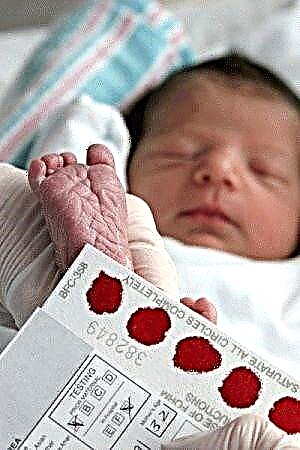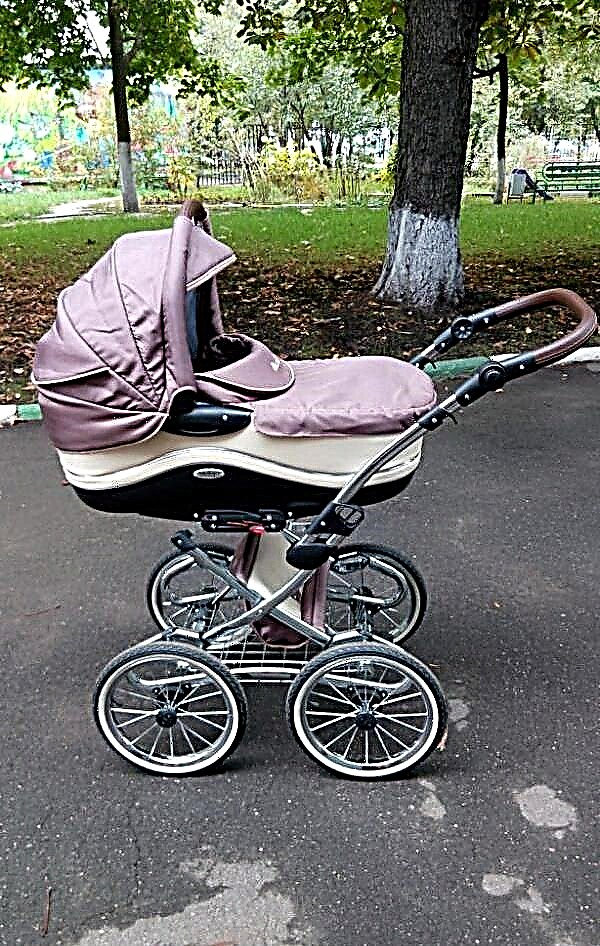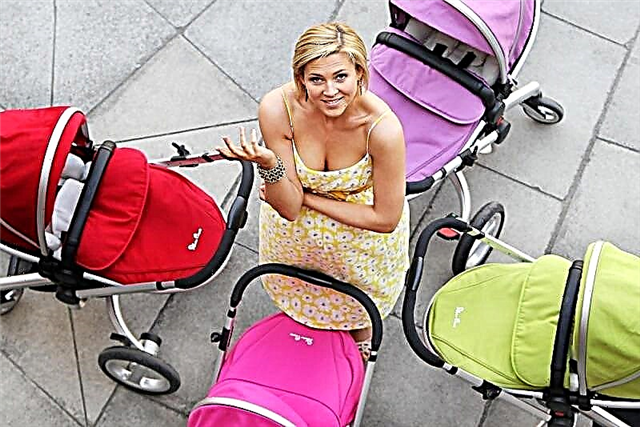The situation when a child cries and bends in an arc is not so rare. This can occur both during wakefulness and during sleep, both after during feeding and after it. Such behavior from the outside looks rather strange and even frightening. Not surprisingly, parents, watching such a scene, begin to worry and wonder if this is the norm. To exclude the possibility of pathology, a doctor's consultation is necessary. At the same time, mom and dad should know what to look for in order to notice suspicious symptoms in time.

The crumb bends and cries
Causes
There are many reasons why a child arches and cries a lot. Most often, this is a normal reaction to certain stimuli. Also, the problem can be caused by some pathologies, most often associated with disruption of the central nervous system.
On a note. The birth of a child is not easy, so often certain difficulties arise during childbirth. Under the influence of the latter, the child's condition may not change for the better. In addition, the baby's nervous system has not yet fully formed, which is why behavior and well-being are more exposed to negative influences.
The reasons why the baby begins to bend his back and cry can be divided into two categories: harmless and pathological. The former are most often of a behavioral, psychological nature, may be associated with the convenience of position, feeding habits, etc. The second group includes a number of diseases and various abnormalities in infants.
Non-dangerous reasons
The "harmless" factors affecting the fact that the child throws his head back and bends include the following:
- Intestinal colic. This problem is typical for the first months of life. Medicines are useless in this case. Pediatricians advise using dill water and massage.
- Colds, particularly runny nose. If the baby has a stuffy nose, it can begin to bend and throw its head back, trying to free its breath in this way. The child needs to rinse the nose with chamomile infusion or other suitable means.
- Convenience. The baby's body can take such an unusual position if the child is comfortable lying like that.
- Desire to change body position. Often, the baby begins to bend if he wants to roll over onto his stomach. Since the baby's motor skills are not yet sufficiently developed, such maneuvers are not easy for him. In this case, the baby just needs to be helped to change position.
- Interest. If the baby is interested in this or that object, people, phenomenon (toys, conversation, TV) that are nearby, then the little one will reach for them, turning his head in the right direction.
Important! Such actions can lead to the development of torticollis and abnormal formation of the skull in a child. Considering this factor, experts recommend hanging toys directly over the child so that he does not have to turn his head or bend, trying to examine and touch them.
- Whims. Even at the age of 1-1.5 years old, children are capable of throwing real tantrums. At such moments, babies can strongly turn their heads back, cry, bend over, thereby showing their displeasure or whims.
- An attempt to master new skills. Newborns actively learn to sit, get up, and crawl, regardless of the time of day or night. Since the coordination of their movements has not yet been established, the position occupied by the body may be quite unusual.
- Less than 4 months old. It is simply uncomfortable for a newborn baby to lie flat. The child wants to move, but he still cannot fix the normal position of the body.
- Heredity. If the baby sleeps in this position, and at the same time his closest relatives are resting in this way, then the child most likely has a hereditary predisposition to this position.
- The little one is indulging. While awake, children can be very active, fooling around, yelling, throwing their heads back or arching their backs.
- Fright. Often, when changing clothes or with a sharp sound, newborn babies throw their arms out to the sides, arch their backs and begin to cry a lot. This phenomenon is called the Moro reflex (self-preservation instinct). In ancient times, he helped the child to grab his mother in case of danger. Such manifestations go away on their own by 4-5 months.
Another possible reason why the baby arches its back and yells is complicated labor. In such cases, regular monitoring by a pediatrician is necessary.

Moro reflex in a newborn
On a note. The birth of a child can be complicated by traumas when passing through the birth canal, fetal hypoxia, overweight at birth, and so on.
During and after feeding
There are many reasons for this behavior in a baby both during and after feeding.
Don't like the taste of milk
If a nursing baby screams, cries, and bends over while eating, chances are good that he doesn't like the taste of breast milk. This can happen if a woman decides to diversify her diet with dishes unusual for her standard menu. To remedy the situation, mom needs to reconsider her diet.
Similar behavior in babies can occur when feeding from a bottle, if the baby does not like the taste of the formula. In this case, it is necessary to select another product for IOT.
Others
One of the most common reasons why a baby arches its back and cries is intestinal colic. Most babies go through this stage, starting at about 3 weeks of age and ending with 3-5 months.
Sometimes, after eating, the children begin to cry, throwing their heads back and arching, because this way they require the attention of their mother. Another reason is the baby's attempt to stretch the body after a long time in one position during feeding.
If the baby cries and bends over after eating, the reason may lie in a phenomenon such as gastroesophageal reflux. In this condition, the contents of the stomach tend upward and enter the esophagus. In newborns, the sphincter (a kind of valve) is still underdeveloped, which prevents the ascending flow of acid and food from the stomach. Often, these manifestations end in regurgitation.
During a meal, bending and crying of a child is also not uncommon. In this case, the problem may be as follows:
- The crumb does not gorge itself;
- Improper attachment to the breast. If the newborn is artificially fed, then perhaps an uncomfortable nipple is interfering with him;
- Distraction (during the feeding process, a foreign object, sound or movement distracted the baby).
Important! Neurological reasons can cause such behavior in a child, the moment of manifestation of which coincided with the feeding process. Nobody canceled children's whims either.

Crying and arching of an infant can cause gastroesophageal reflux
What to do
So that the child does not bend and scream during lactation, experts recommend:
- Do not put your baby in the crib immediately after eating. Motion sickness is categorically excluded. For about an hour, the baby needs to be held in an upright position (under the influence of gravity, food will move faster through the esophagus into the stomach, and then into the intestines);
- Divide the daily volume of food into several small portions - frequent feeding with a small amount of food excludes filling the stomach and, as a result, the likelihood of regurgitation;
- Try not to give your child food just before bedtime;
- You should not swaddle the baby tightly after feeding (and in general in general), since this has a direct effect on the digestive system;
- A nursing woman should limit her intake of cabbage, nuts, legumes, cucumbers, baked goods, soda, and other foods that cause gas in the baby.
If the baby, after eating, began to bend and cry due to intestinal colic, then the following must be done:
- Put the baby on his back and massage his tummy, moving clockwise. During the procedure, the baby's legs are bent and unbent, stimulating the intestines.
- Put a heating pad on the baby's stomach.
- Give the baby dill water.
- Turn the baby over on his stomach. It is necessary that he lie in this position for 5-10 minutes. This position strengthens the abdominal muscles and stimulates the release of gases accumulated in the intestines.
- If the child has an arched back and the baby tilts his head back, he should be helped to take the correct position. To do this, the baby is placed on the stomach and the ass is gradually raised, thus shifting the main body weight onto the shoulder blades. As a result, the cervical and spinal muscles relax and the baby is in the correct position.
Note. The reasons described above for such behavior in infants can occur even in the absence of certain pathologies. If the bends do not fit any of the above situations or are repeated too often, the baby should be shown to a specialist.
Dangerous symptoms
In addition to the above reasons that can cause crying and arching in a child, there are a number of pathological factors.

Hypertonicity of muscles in an infant
Causes and symptoms:
- Muscle hypertonicity. To identify the problem, you need to try to pull the baby's head down with the chin. If the process is hampered by resistance, it is recommended to show the baby to the doctor.
Other signs include:
- The baby is tense, arching;
- The child sniffs, groans, but does not cry.
If these symptoms are found, Dr. Komarovsky advises to contact a neurologist and undergo all the necessary examinations. The doctor will prescribe adequate treatment, which includes relaxing massage and therapeutic exercises. In addition to massages, baths with the addition of various herbs with healing properties are an effective remedy.
- Increased intracranial pressure, the presence of which may be indicated by the following symptoms:
- Lethargy;
- Lack of appetite;
- Bad sleep;
- Frequent whims;
- Restless behavior;
- The child screams and bends;
- Cyanosis of the nasolabial triangle;
- Strabismus;
- Nausea and regurgitation during headache attacks;
- Accelerated head growth.
In this case, the child needs urgent medical attention. Complicated labor, cesarean section, prematurity can become the causes of ICP.
On a note. This indicator may increase during too active games, hysterics. If this happens irregularly, and the deviation from the norm is not so great, then we are not talking about pathology at all.
- Disruption of the central nervous system, epilepsy, meningitis, tumors, encephalitis. These are serious diseases that require immediate medical attention.
- Violation of the musculoskeletal system, in particular, cerebral palsy. Diagnosis is made only by a doctor based on monthly observations of the baby.
- Torticollis. The symptoms of this disease are:
- Curvature of the cervical vertebrae in a child;
- The baby's head is turned to one side.
To establish an accurate diagnosis, a medical examination is required. Prevention will help prevent such deviations: the baby is in the arms of mom or dad, someone else calls him first from one side, then from the other. As a result, the baby begins to turn his head to the right and then to the left. For the same purpose, the baby is advised to be put to sleep on different sides.
A mild torticollis can be eliminated with massage and special exercises. In other cases, it is required to wear a medical corset around the neck.

Torticollis in a child
There are a lot of reasons that can cause an acrobatic bridge, crying and throwing back the head in a child under one year old. Moreover, some of them pose a serious danger to the health of the baby. When this condition occurs, you do not need to panic, you need to observe the child's behavior for a while, if the symptoms persist, show the baby to a specialist.



